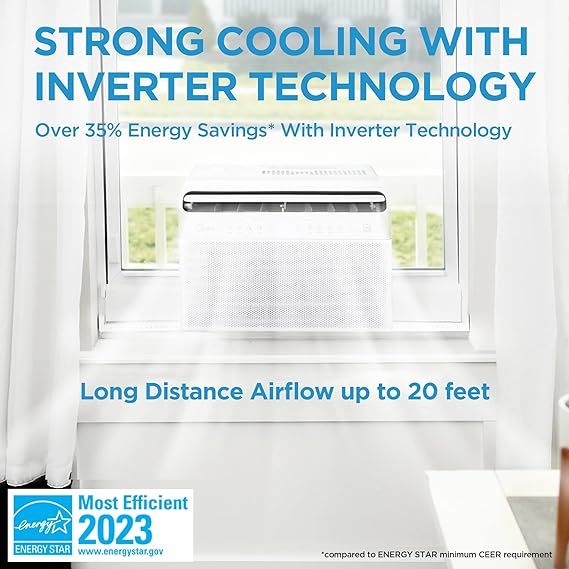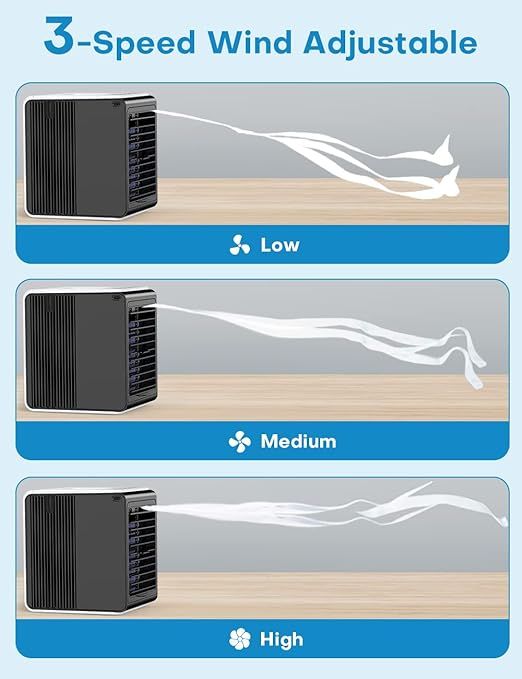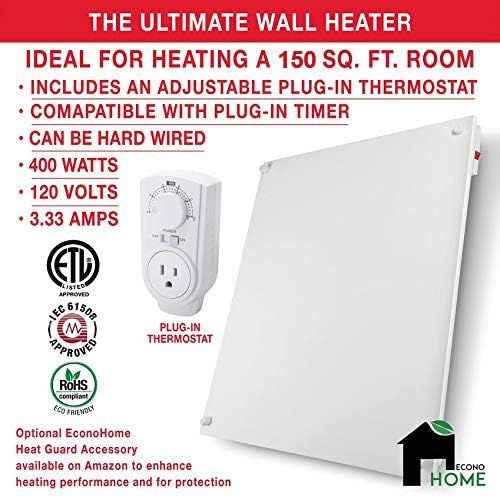Manual J Load Calculation: How to Get Perfect Home Temperature Control
- What Is Manual J Load Calculation?
- The Goal
- Why Sizing Matters
- 1. Oversized Systems Waste Energy
- 2. Undersized Systems Struggle
- 3. Comfort and Humidity Control
- 4. Longer Equipment Life
- 5. Lower Energy Bills
- Key Factors in Manual J Load Calculations
- Typical BTU Requirements by Home Size
- How Professionals Perform a Manual J Calculation
- Common Sizing Mistakes (and How to Avoid Them)
- Impact of Wrong Sizing
- Top 10 HVAC Systems for Properly Sized Homes (Manual J Compatible)
- Detailed Reviews and User Insights
- 1. Goodman GSX16 + GMEC96
- 2. Daikin 17 Series Mini Split
- 3. MRCOOL DIY 3rd Gen
- 4. Lennox EL296V Gas Furnace
- 5. Mitsubishi Electric MUZ-FS12NA
- 6. Carrier Infinity 19VS
- 7. Rheem Classic Plus RA16
- 8. Bosch IDS 2.0
- 9. Trane XR14
- 10. Amana ASXH5
- Performance Comparison Table
- The Cost of Wrong Sizing
- User Insights: Homeowners Who Got It Right
- Tips for Homeowners
- Conclusion
When planning to install or replace an HVAC system, homeowners often focus on brand, efficiency, or price. But there's one critical factor that determines comfort, energy bills, and system lifespan - proper sizing.
That's where Manual J Load Calculation comes in. It's the industry-standard method used to determine exactly how much heating and cooling a home needs based on science - not guesswork.
Undersized systems struggle to keep up, while oversized ones waste energy and fail prematurely. In this guide, we'll explain what Manual J is, how it works, why it's essential, and how it impacts your home's comfort and efficiency.
We'll also compare 10 high-performance HVAC units, highlight common sizing mistakes, and show how accurate calculations lead to long-term savings.
What Is Manual J Load Calculation?
Manual J is a heat load calculation method developed by the Air Conditioning Contractors of America (ACCA). It measures how much heating or cooling a specific building requires to maintain ideal indoor comfort.
Rather than estimating by square footage alone, it considers multiple detailed factors like climate, insulation, windows, materials, and occupancy.
The Goal
To determine the correct system capacity (measured in BTUs - British Thermal Units per hour) for both heating and cooling needs.
| System Type | Measured In | Purpose |
|---|---|---|
| Air Conditioners / Heat Pumps | BTU/h Cooling Load | Removes heat from indoor air |
| Furnaces / Boilers | BTU/h Heating Load | Adds heat to indoor air |
A professional HVAC contractor uses Manual J to create a digital model of your home, ensuring the system installed matches your actual load - not a generic "rule of thumb."
Why Sizing Matters
1. Oversized Systems Waste Energy
An oversized HVAC unit cycles on and off frequently - a problem known as short cycling.
This wastes energy, causes uneven temperatures, and leads to premature wear.
2. Undersized Systems Struggle
A small system runs continuously to reach target temperature, consuming more electricity and leaving you uncomfortable during extreme weather.
3. Comfort and Humidity Control
Proper sizing ensures balanced air distribution and effective humidity removal, which oversized units often fail to achieve.
4. Longer Equipment Life
When sized right, systems operate efficiently without overworking components - extending lifespan by several years.
5. Lower Energy Bills
The right-sized system consumes exactly what's needed - no waste, no strain, and maximum efficiency.
Key Factors in Manual J Load Calculations
| Variable | Description | Impact |
|---|---|---|
| Climate Zone | Local outdoor temperature extremes | Directly affects load requirements |
| Home Size & Layout | Total square footage and ceiling height | Determines total air volume |
| Insulation Level | Wall, floor, and attic R-values | Higher insulation = lower load |
| Windows & Doors | Glass area and sealing | Major sources of heat loss or gain |
| Orientation | Direction house faces | Sun exposure impacts cooling load |
| Occupants | Each person adds ~600 BTU/h | Affects both heating and cooling needs |
| Appliances & Lighting | Emit heat inside home | Adds to cooling load |
| Air Leakage | Infiltration through cracks | Reduces efficiency |
Manual J is often paired with Manual S (equipment selection) and Manual D (duct design) to complete a full HVAC sizing plan.
Typical BTU Requirements by Home Size
| Home Size (sq ft) | Cooling Load (BTU/h) | Heating Load (BTU/h) |
|---|---|---|
| 1,000 | 18,000 | 30,000 |
| 1,500 | 24,000 | 45,000 |
| 2,000 | 30,000 | 60,000 |
| 2,500 | 36,000 | 75,000 |
| 3,000 | 42,000 | 90,000 |
(Values are approximate - true loads vary by insulation, climate, and design.)
How Professionals Perform a Manual J Calculation
-
Gather Building Data - Measurements, windows, insulation type, and ceiling height.
-
Input Climate Information - Local temperature and humidity ranges.
-
Determine Air Infiltration - Estimate how much air leaks into and out of the house.
-
Calculate Heating and Cooling Loads - Separate calculations for each room.
-
Sum and Balance - Combine loads for total system capacity.
-
Select System Type - Match to Manual S for proper HVAC sizing.
Modern software like CoolCalc or HVAC-Calc streamlines this process, producing results accurate within 1-2 %.
Common Sizing Mistakes (and How to Avoid Them)
| Mistake | Problem Caused | Solution |
|---|---|---|
| Using square footage only | Oversized or undersized system | Always perform full Manual J |
| Ignoring insulation and leakage | Misjudged load | Include real R-values and sealing level |
| Not accounting for windows | High heat gain/loss | Factor in glass area and orientation |
| Assuming identical homes need same system | Every house is unique | Recalculate for remodels or new builds |
| Skipping duct design | Poor air balance | Combine with Manual D analysis |
Impact of Wrong Sizing
| Result | Oversized Unit | Undersized Unit |
|---|---|---|
| Energy Use | High due to short cycles | High due to long run times |
| Comfort | Uneven, clammy air | Never reaches desired temp |
| Humidity Control | Poor - cycles off before dehumidifying | Moderate but constant |
| Lifespan | Shortened | Shortened |
| Operating Noise | Higher | Constant hum |
Top 10 HVAC Systems for Properly Sized Homes (Manual J Compatible)
| Model | Type | Approx. Amazon Price (USD) | Capacity (BTU) | SEER / AFUE | User Rating |
|---|---|---|---|---|---|
| Goodman GSX16 + GMEC96 | Split AC + Gas Furnace | $3,499 | 36,000 | 16 SEER / 96% | ★★★★★ 4.8 |
| Daikin 17 Series Mini Split | Ductless Heat Pump | $1,499 | 12,000 | 17 SEER | ★★★★★ 4.7 |
| MRCOOL DIY 3rd Gen 18K | Mini Split System | $1,899 | 18,000 | 20 SEER | ★★★★☆ 4.6 |
| Lennox EL296V | Gas Furnace | $2,799 | 80,000 | 96% AFUE | ★★★★★ 4.8 |
| Mitsubishi Electric MUZ-FS12NA | Mini Split | $2,049 | 12,000 | 20.5 SEER | ★★★★★ 4.9 |
| Carrier Infinity 19VS | Variable-Speed Split System | $3,599 | 36,000 | 19 SEER | ★★★★☆ 4.7 |
| Rheem Classic Plus RA16 | Split AC System | $2,199 | 24,000 | 16 SEER | ★★★★☆ 4.6 |
| Bosch IDS 2.0 | Inverter Heat Pump | $3,099 | 36,000 | 20.5 SEER | ★★★★★ 4.8 |
| Trane XR14 | Central Air Conditioner | $2,499 | 30,000 | 16 SEER | ★★★★☆ 4.5 |
| Amana ASXH5 | Split AC + Furnace Pair | $3,200 | 30,000 | 15 SEER / 96% | ★★★★☆ 4.6 |
Detailed Reviews and User Insights
1. Goodman GSX16 + GMEC96
A reliable split system offering strong performance and high efficiency.
Pros: Great for moderate climates, quiet operation, durable build.
Cons: Professional installation required.
Customer Review:
"After doing a proper Manual J, this system fits my 1,800 sq ft home perfectly. Bills dropped instantly." - ★★★★★
2. Daikin 17 Series Mini Split
Compact, energy-efficient, and ideal for single rooms or apartments.
Pros: Excellent SEER rating, whisper-quiet, remote control.
Cons: Not powerful enough for whole-home use.
Customer Review:
"Installed after Manual J sizing - perfect for my home office. Great comfort and savings." - ★★★★★
3. MRCOOL DIY 3rd Gen
DIY-friendly heat pump ideal for homeowners wanting to install themselves.
Pros: Easy setup, no professional required, smartphone control.
Cons: Limited warranty compared to pro models.
Customer Review:
"I ran a quick Manual J online and found 18K was right - it's perfect for my 500 sq ft garage." - ★★★★☆
4. Lennox EL296V Gas Furnace
A two-stage gas furnace for consistent warmth.
Pros: Energy Star rated, quiet, powerful blower motor.
Cons: High upfront cost.
Customer Review:
"My HVAC contractor used Manual J before installation - and it's the most comfortable winter ever." - ★★★★★
5. Mitsubishi Electric MUZ-FS12NA
Top-tier inverter-driven mini split with outstanding control.
Pros: Super-efficient and reliable.
Cons: Premium pricing.
Customer Review:
"Excellent performance after proper sizing - humidity control is incredible." - ★★★★★
6. Carrier Infinity 19VS
Variable-speed system that adapts to load demand.
Pros: Smart home compatible, very quiet.
Cons: Requires professional setup.
Customer Review:
"Perfect sizing makes this system almost silent - we barely notice it running." - ★★★★☆
7. Rheem Classic Plus RA16
Affordable split AC system offering solid mid-tier performance.
Pros: Dependable brand, easy maintenance.
Cons: Louder than inverter models.
Customer Review:
"Perfect match for our Manual J report - comfortable and cost-effective." - ★★★★☆
8. Bosch IDS 2.0
A high-performance inverter heat pump with great seasonal efficiency.
Pros: Smooth variable-speed operation, strong heating even in cold weather.
Cons: Higher price tag.
Customer Review:
"Efficient and whisper-quiet. Perfect balance after proper load calculation." - ★★★★★
9. Trane XR14
Durable and long-lasting split AC unit.
Pros: Proven reliability, easy serviceability.
Cons: Slightly dated control options.
Customer Review:
"Performs great for our 2,000 sq ft home - matched perfectly to Manual J specs." - ★★★★☆
10. Amana ASXH5
Budget-friendly combination system for moderate climates.
Pros: Good value, dependable, Energy Star certified.
Cons: Not inverter-driven.
Customer Review:
"Affordable comfort, and correct sizing made all the difference." - ★★★★☆
Performance Comparison Table
| Model | Energy Efficiency | Noise Level | Best For | Rating (★) |
|---|---|---|---|---|
| Goodman GSX16 | High | Low | Family homes | 4.8 |
| Daikin 17 Series | Very High | Very Low | Apartments | 4.7 |
| MRCOOL DIY 18K | High | Low | Garages, offices | 4.6 |
| Lennox EL296V | Excellent | Low | Cold climates | 4.8 |
| Mitsubishi MUZ-FS12NA | Superior | Very Low | Single rooms | 4.9 |
| Carrier Infinity 19VS | Very High | Very Low | Smart homes | 4.7 |
| Rheem RA16 | Good | Medium | Moderate climates | 4.6 |
| Bosch IDS 2.0 | Excellent | Very Low | All-season use | 4.8 |
| Trane XR14 | Good | Medium | Larger homes | 4.5 |
| Amana ASXH5 | Good | Medium | Budget installs | 4.6 |
The Cost of Wrong Sizing
| Issue | Estimated Added Cost per Year | Cause |
|---|---|---|
| Oversized System Energy Waste | $150-$300 | Short cycling |
| Undersized System Overload | $200-$400 | Long run times |
| Reduced Lifespan Repairs | $250-$500 | Component wear |
| Poor Humidity Control | Comfort loss (non-financial) | Fast cycling |
A $200 load calculation can save thousands over the life of your HVAC system.
User Insights: Homeowners Who Got It Right
"We nearly bought a 4-ton unit, but Manual J showed we only needed 3 tons - saved $900 upfront."
"After replacing an oversized furnace, humidity improved and our bills dropped 20 %."
"Every contractor should do this before quoting a system. It's night and day difference in comfort."
Tips for Homeowners
-
Insist on Manual J - Don't accept quotes based on square footage alone.
-
Upgrade Insulation - Lower your required load before replacing equipment.
-
Use Smart Thermostats - Maximize efficiency after sizing.
-
Don't Oversize "Just in Case" - Bigger is not better in HVAC.
-
Verify Contractor Credentials - Certified ACCA professionals ensure accuracy.
Conclusion
Proper HVAC sizing through Manual J Load Calculation is not just a technical step - it's the foundation of comfort, efficiency, and system longevity.
Whether you're upgrading an old furnace or installing a new mini split, an accurate load analysis ensures you pay for performance, not waste.
When your home's heating and cooling are perfectly matched, you'll enjoy even temperatures, lower bills, longer equipment life, and better indoor air quality.
In HVAC, precision equals comfort - and Manual J makes that precision possible.







